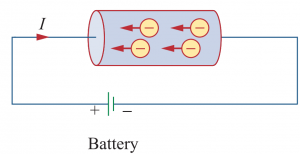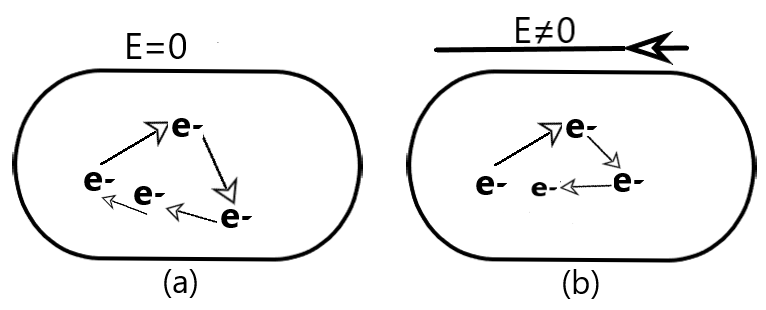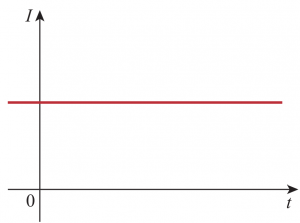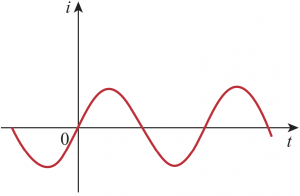Charge and Current
Electrical charge
A charge is an electrical property of the atomic particles of which matter consists. Unit of charge is ‘Coulomb’.
Charge on an atom
An atom consists of three basic atomic particles called electron, proton, neutron. The number of electrons and protons inside an atom is equal but opposite in charge.
- Charge on an electron = -1.6×10-19 Coulomb.
- Charge on a proton =+1.6×10-19 Coulomb.
- Charge on a neutron = 0 Coulomb
After adding the charges of electrons, protons, neutrons we get, the net charge on an atom is zero. Only electrons are free to move inside an atom while protons and neutrons are inside the nucleus of an atom.
Type of charge and how they occur?
There are mainly two types of charge:
1.Positive Charge:- When an electron is removed from an atom then that atom is positively charged by +1e i.e, +1.6×10-19 Coulomb. Similarly, if n number of electrons are removed then the charge on the atom is +ne.
2.Negative Charge:- When an electron is added to an atom that atom is negatively charged by -1e i.e, -1.6×10-19 Coulomb. Similarly, if n electrons are added to the atom charge on that atom is – ne.
Properties of charge
- Same charges repel each other.
- Opposite charges attract each other.
- A positive charge moves in the direction of the electric field while a negative charge moves in the direction opposite to it.
- Conservation of charge:- Conservation of Charge is the principle that the total electric charge in an isolated system never changes. The net quantity of electric charge, the amount of positive charge minus the amount of negative charge in the universe, is always conserved. It also states that charge can neither be created nor destroyed, only transferred.
- Quantization of charge:- Quantization of charge means charge can only exist in an integral multiple of electronic charge (e). That is q=±ne, where n=1,2,3…
Real-life examples of the charge
- Lightning
- Electric charge is used in the printers and photocopiers to attract ink or toner to the paper.
- When you rub a balloon against your clothes it sticks to the wall.
- Lightning of bulb.
- It is used to transfer energy from one electrical element to another.
First, three examples or application is of static charge. And last two are examples of current electricity. In network theory, we will discuss current electricity only. Static electricity is discussed in another post. Electricity generally means the flow of charge.
Current and it’s unit
The rate of flow of charge is called electric current. In other words, the current flowing through a conductor per unit time (1 sec) is called the current inside that conductor. S.I unit of current is Ampere denoted by ‘A’.
\[I= \frac{Q}{t} \]
where Q=total charge pass through a conductor in time ‘t’.
I=Current carrying through the conductor.
What do you mean by one-ampere current?
When one coulomb of charges flows in a conductor in one second then we called that conductor is carrying one ampere of current.
\[1 A= \frac{1 C}{1 sec} \]
Direction of electric current
Electric current occurs due to the flow of charges. Inside a conductor, only electrons are free to move and the charges on the electron are -ve. That means electric current occurs due to the flow of -ve charges. So, logically we should take the direction of current in the direction of flow of -ve charges. But as per convention, we take the direction of current opposite to the flow of electrons(-ve charge). In other words direction of current is in the direction of positive charges.

Instantaneous current
Current inside a conductor at a given instant of time is called instantaneous current. Previously we study about average current which is usually denoted by capital ‘I’. But the instantaneous current is denoted by small ‘i’. Mathematically instantaneous current is represented by :
\[I= \frac{ \Delta Q}{ \Delta t}\] where ΔQ is the amount of charge flows through a conductor in a time interval.
If the time interval is made small such that Δt→0 , the average current within that interval is called the instantaneous current.
\[i=i(t)= \lim_{ \Delta t \rightarrow 0} \frac{ \Delta Q}{ \Delta t}
\Rightarrow i=\frac{dq}{dt} \]
where i=Current at a given instant of time.
dq=infinitesimals charge.
dt= Δt→0 , very very small interval of time.
If we want to know the total charge transferred between time t0 and t when i(t) is given, then we have to integrate the above equation:
\[i= \frac{dq}{dt} \Rightarrow dq=idt \Rightarrow Q= \int_{t0}^t idt \]
Drift Velocity (Vd)
Drift velocity is the average velocity of charged particles (electrons) inside a material due to an electric field. In below fig (a) when the electric field applied is zero, the average velocity of the electron is zero. While it has some velocity( in figure no. (b) ) when the electric field is not zero. That velocity is called drift velocity.

Formula for Drift Velocity
- n is the number of electrons per unit volume.
- s is the Displacement of electrons in time t when an electric field is applied.
- A is the area of the cross-section of the conductor which is measured in m2
- v is the drift velocity of the electrons
- e is the charge of an electron which is measured in Coulombs
- I is the current flowing through the conductor which is measured in amperes
Types of electric current
There are two types of electric current:- Direct current (DC): Current which flows only in one direction and can be constant or time-varying is called direct current. It comes from a battery or DC source.

- Alternating Current(AC): The current that changes direction with respect to time is called alternating current. It comes from an alternator or AC source. For example-Sinusoidal current: i(t)=4 sin(388)t. In our home supply, we get Alternating current.
